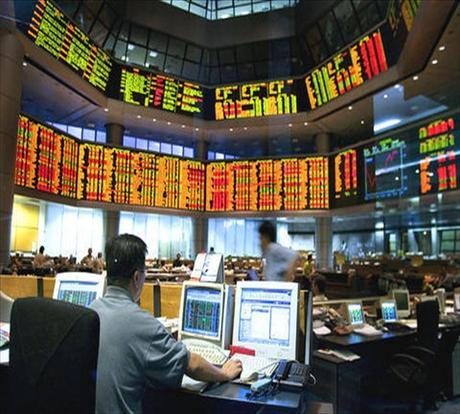Do you have trouble pulling the trigger to enter, exit, or manage the trade? If so, you're not alone. Greed and fear exert a powerful influence when the time comes to enter the trade. Before pulling the trigger, consider this…
 1. Trend
Analysis
The structure of the primary trend will
determine whether to setup a long or a short position. If the primary trend is
making higher highs and higher lows, the lows are valid demand zones. If the
primary trend is making lower highs and lower lows, the highs are valid supply
zones.
2. Valid
Supply & Demand Zones
The “validity” of zone is determined by its
location in the trend. Is the supply/demand zone retesting a historical
supply/demand zone or is it a “fresh” zone?
“Fresh” zones are areas of supply and demand that have the highest
probability of a strong price move with the least amount of risk.
3. Zone-ing
Process
Use a step-by-step zone-ing process to
identify the high probability demand zones and to identify the high probability
supply zones. Strong demand zones (high volatility, expanding range) and strong
supply zones (high volatility, expanding range) increase the probabilities of
successful trading.
4. Odds
Enhancers
Score the demand zones and the supply zones
using odds enhancers to determine the strength of the zone. A scale of 1 – 10
is typically used to determine if the zone is a high probability trade.
5. Time
High impact news events (increasing
volatility) drives price to supply and demand zones at a very high rate of
speed. The “opening bell” of the US Markets is high volatility. Each asset
class has higher volatility depending on the time of day and which news events
are affecting the markets at that time.
6. Market Correlation
Market Correlation enables traders to
identify Institutional money flow as institutions buy and sell assets. Cross
referencing demand and supply zones for positively and negatively correlated
products increases the probability of success. Determine which correlated
assets are in demand zones and which assets are in supply zones before pulling
the trigger.
1. Trend
Analysis
The structure of the primary trend will
determine whether to setup a long or a short position. If the primary trend is
making higher highs and higher lows, the lows are valid demand zones. If the
primary trend is making lower highs and lower lows, the highs are valid supply
zones.
2. Valid
Supply & Demand Zones
The “validity” of zone is determined by its
location in the trend. Is the supply/demand zone retesting a historical
supply/demand zone or is it a “fresh” zone?
“Fresh” zones are areas of supply and demand that have the highest
probability of a strong price move with the least amount of risk.
3. Zone-ing
Process
Use a step-by-step zone-ing process to
identify the high probability demand zones and to identify the high probability
supply zones. Strong demand zones (high volatility, expanding range) and strong
supply zones (high volatility, expanding range) increase the probabilities of
successful trading.
4. Odds
Enhancers
Score the demand zones and the supply zones
using odds enhancers to determine the strength of the zone. A scale of 1 – 10
is typically used to determine if the zone is a high probability trade.
5. Time
High impact news events (increasing
volatility) drives price to supply and demand zones at a very high rate of
speed. The “opening bell” of the US Markets is high volatility. Each asset
class has higher volatility depending on the time of day and which news events
are affecting the markets at that time.
6. Market Correlation
Market Correlation enables traders to
identify Institutional money flow as institutions buy and sell assets. Cross
referencing demand and supply zones for positively and negatively correlated
products increases the probability of success. Determine which correlated
assets are in demand zones and which assets are in supply zones before pulling
the trigger.
7. Risk/Reward Determine risk per trade. If the risk per trade is less than 1/3 of the profit potential, it is considered a low risk trade. If there is more than one profit target and more than one entry, choose the most conservative risk-to-reward ratio. 8. Order Entry Types There are typically 3 entry times to open and close a position: #1 limit entry (as price trades into a zone), #2 confirmation entry (as prices trades within the zone), and #3 breakout entry (as price trades out of the zone). Depending on the risk amount per trade and the size of the position will determine which type or order has the least amount of risk. 9. Margin Requirement Margin requirements vary depending on the time of day and the product. Typically, intraday margin rates are much higher than overnight margin rates. Before pulling the trigger, determine if margin requirements will change affecting open positions. It may be necessary to reduce size if margin rates change. 10. Position Size Before pulling the trigger, determine how to open the position with less than 1% of the account value. Since there are pyramid techniques to add to a position once profitable, it is not wise to open the position without considering if you plan to scale in and scale out of the position (pyramiding). Creating a checklist that includes odds enhancers to score each zone before pulling the trigger will increase the probabilities of success. Proper risk management and order entry techniques are also considered in this checklist. Check yourself before you wreck yourself! Trade Well… About The Author: Tillie Allison is the Founder and President of Bridgestone Financial. She is a contributing author for Virtual Traders Magazine and a regular guest on Power Trading Radio to discuss the stock, options, and futures markets. She enjoys personal fitness, psychology, and traveling. Tillie is a trading instructor, teaching the Professional Trader Training Course, Futures, and ProActive Investor Course for Day Trading firm Online Trading Academy. She is also a member of the Market Technicians Association and the Certified Financial Planning Board of Standards.

